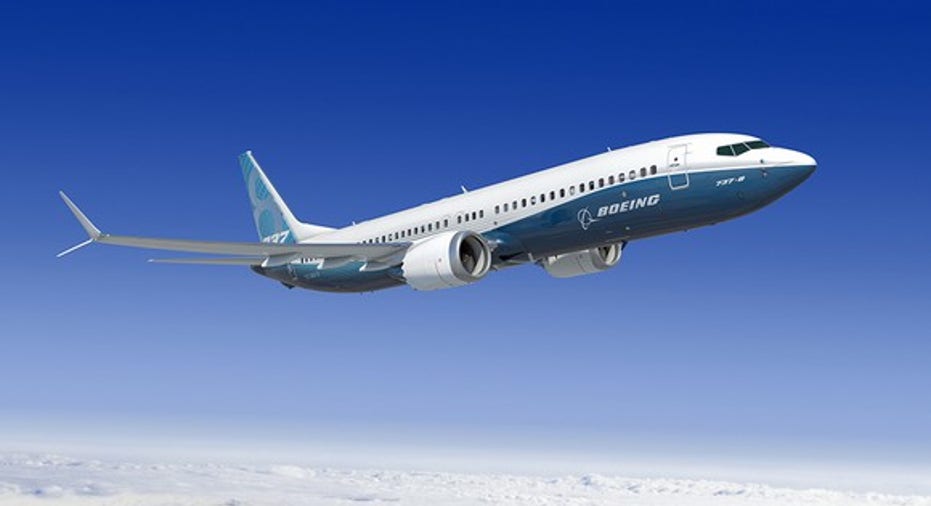5 Things Boeing Co. Management Wants You to Know

On Wednesday, Boeing (NYSE: BA) reported solid earnings for the final quarter of 2016. Just as importantly, the company offered a relatively favorable outlook for 2017, punctuated by its guidance that free cash flow will rise by roughly $550 million year over year, reaching nearly $8.5 billion.
After the earnings release, Boeing executives spent some time discussing the company's results and outlook with analysts and the media. Here are five key points that they emphasized.
Expecting a soft landing for aircraft orders
Boeing has experienced a fairly sharp decline in its annual order intake over the past few years. Between 2012 and 2014, Boeing received 3,990 net commercial airplane orders: an average of 1,330 per year. By contrast, net orders plunged to 768 in 2015 and 668 in 2016. Some analysts expect another big decline in orders this year.
Aircraft order activity has cooled off since 2014. Image source: Boeing.
However, Muilenberg expects order activity to remain stable relative to 2016. Aircraft deliveries will continue to outpace orders, but not by an alarming amount. Given the massive size of Boeing's backlog -- it still has about 5,700 firm orders on the books -- a minor slowdown in order activity like this isn't a cause for worry.
Financial metrics will continue to improve beyond 2017
In the earnings release, Boeing forecast that while revenue will decline in 2017, all of its other key business metrics will improve. However, with monthly deliveries of the cash-cow 777 model set to decline by half over the next year or so, investors were understandably nervous about the outlook for 2018.
Smith provided some reassurance on that front. Improving profitability across multiple programs -- on both a cash and a non-cash basis -- will more than offset the negative impact of slowing 777 production. As a result, the company's preliminary outlook calls for all key financial metrics to increase in 2018.
Another tanker charge -- but the worst is over
Boeing recorded another charge on its troubled KC-46 Pegasus military tanker program last quarter, this time totaling $312 million before tax. Cumulative cost overruns on the program have now surpassed $2 billion.
That said, while management wouldn't rule out the possibility of further charges in 2017, the risk of another major setback is decreasing. Boeing hasn't identified any new problems in the past couple of quarters. Its main challenge now is incorporating various recent design changes into the first batch of tankers that will be delivered starting later this year.
Thus, there is a light at the end of the tunnel. Indeed, Boeing expects the tanker program to turn cash positive in 2018 and become a reliable source of cash flow for decades thereafter.
The next-gen 777X remains on track
Given the steep drop in demand experienced by the 777 program recently, it is more important than ever to get production of the next-generation 777X model up and running smoothly. While Boeing hasn't received any 777X orders for a while, it does have a backlog of 320 firm orders. Furthermore, the efficiency benefits of the new models will make them much more marketable in the long run than the current-generation 777.
Development of the 777X remains on track. Image source: Boeing.
So far, everything is on track. Development is proceeding smoothly and Boeing has already started to build some parts for the first 777X test model. While it may not be possible to put the 777X into service ahead of schedule -- as is expected for the new 737 MAX -- there should be no problem having it ready by early 2020, as planned.
Services represents a huge long-term growth opportunity
One of Boeing's biggest opportunities over the next decade will be growing its high-margin services business. To hone its focus on this area, Boeing decided in late 2016 to create a third major business unit focused on services, combining parts of its current commercial and defense segments. This business unit will be up and running by Q3 2017.
In 2016, the services portion of Boeing's defense segment produced an operating profit of about $1.3 billion on $10 billion of revenue. The commercial services business is somewhat smaller. However, Boeing sees an opportunity to grow its annual services revenue to as much as $50 billion in the long run by gaining share and participating in long-term market growth.
That's an ambitious goal. But if Boeing manages to achieve it, services would eventually become one of the company's biggest sources of profit.
10 stocks we like better than Boeing When investing geniuses David and Tom Gardner have a stock tip, it can pay to listen. After all, the newsletter they have run for over a decade, Motley Fool Stock Advisor, has tripled the market.*
David and Tom just revealed what they believe are the 10 best stocks for investors to buy right now... and Boeing wasn't one of them! That's right -- they think these 10 stocks are even better buys.
Click here to learn about these picks!
*Stock Advisor returns as of January 4, 2017
Adam Levine-Weinberg owns shares of Boeing. The Motley Fool has no position in any of the stocks mentioned. The Motley Fool has a disclosure policy.